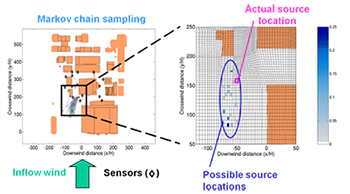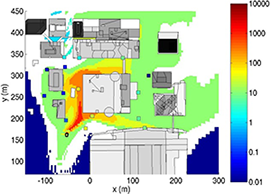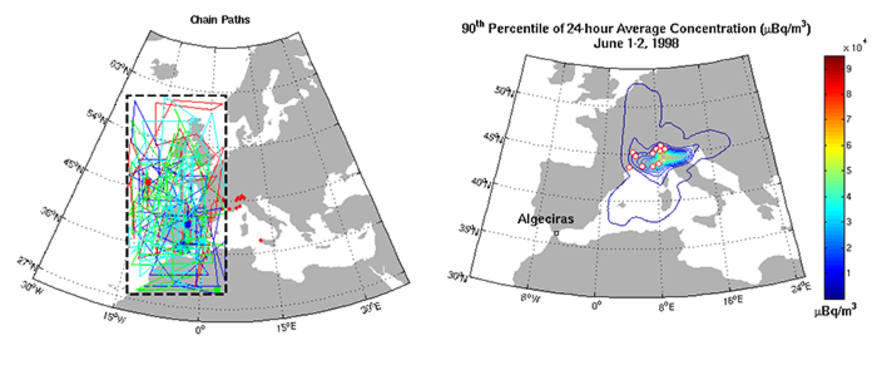During the early stages of an atmospheric release, limited information may be available on the exact location or time of the release, the quantity of material emitted, the dispersal mechanism, or other source characteristics. This results in uncertainties and potential inaccuracies in initial atmospheric dispersion predictions. As the event progresses, aerial and ground-based measurements of air concentration or deposition can be used to perform source term estimation and refine model inputs and products.
NARAC has developed capabilities that allow expert users to efficiently utilize field measurement data to improve dispersion predictions. Software tools are available to rapidly acquire, quality assure, filter, and process multiple types of field data. Additional capabilities allow scientists to rapidly produce a suite of model predictions developed from a range of physically-realistic source term assumptions, compare the results using graphical and statistical metrics, and select the prediction(s) that provides the best agreement with the data. Automation of such tools reduces the time required to conduct model-data analyses.
NARAC has conducted research into the development of a statistically-rigorous source reconstruction capability that combines sensor measurements with advanced models to determine the probabilistic distribution of unknown source term parameters (e.g., location, time, strength) consistent with all known information. The approach is based on Bayesian inference and stochastic sampling techniques such as Markov Chain Monte Carlo (MCMC) and Sequential Monte Carlo (SMC). This data inversion source reconstruction technique has been implemented and testing against field experiment measurements using a variety of dispersion models and scales ranging from urban to continental.







